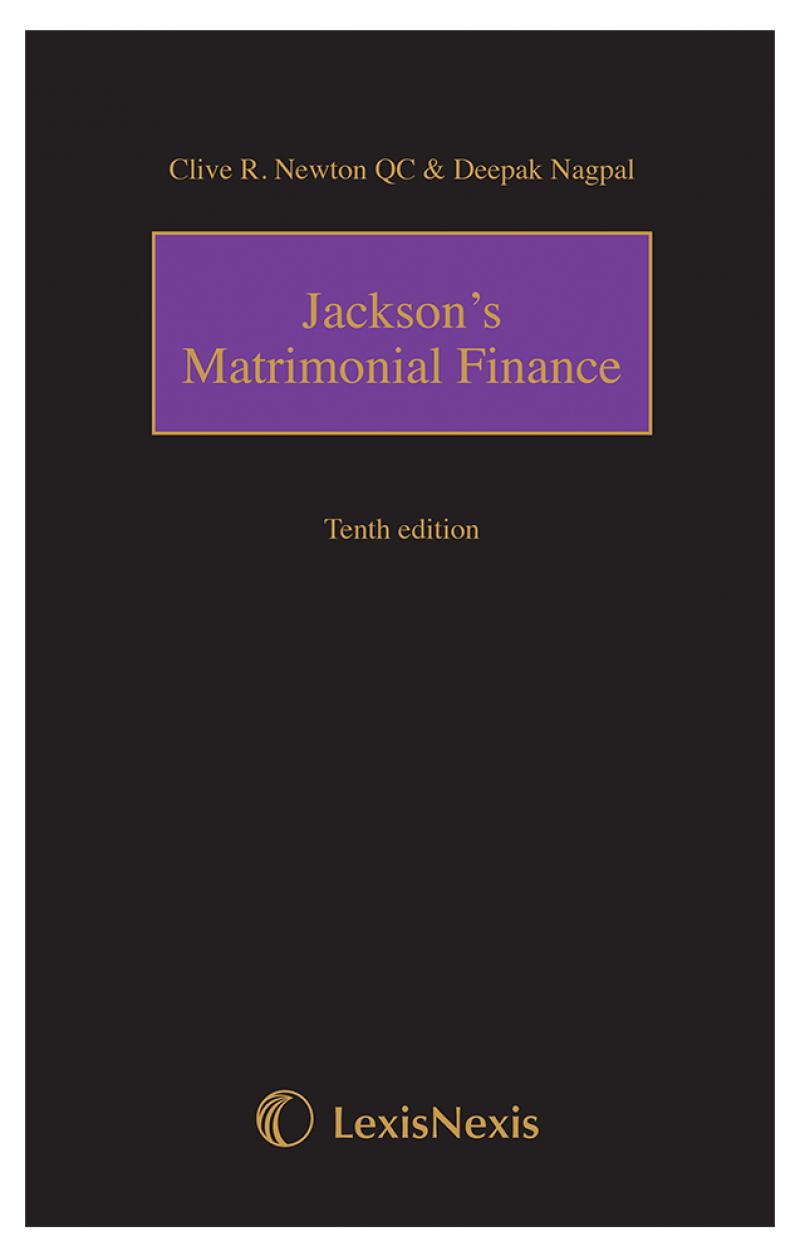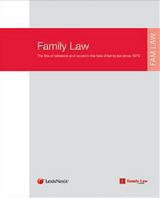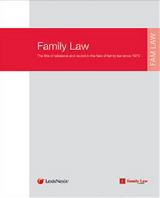- News & Comment
-
Online Shop
Online Services
Looseleafs
Law Reports
Books and eBooks
-
CPD & Events
Webinars
Events
- Authors
- About Family Law
- Contact












 11 FEB 2025
11 FEB 2025

 11 FEB 2025
11 FEB 2025

 11 FEB 2025
11 FEB 2025

 11 FEB 2025
11 FEB 2025

 11 FEB 2025
11 FEB 2025









In what could represent a new frontier for the way that Schedule 1 (The Children Act 1989) applications are dealt with by the courts, DN v UD [2020] EWHC 627 (Fam) marks the first ever reported example of long-term capital provision being made for a child which extends into independent adulthood. In a case which is notable for several reasons, Mr Justice Williams made the unprecedented decision to award capital sums to the two youngest children to purchase their own properties outright in the future.
Background
DN v UD is a “big money” case involving the mother and father of three children, aged 22, 19 and 14 at the time of judgment. Both Russian nationals, the parents never married but cohabited intermittently over the last two decades, with the relationship finally coming to an end in 2016. During this time, the father was successively married to three other women, divorcing two of them, and fathering several other children.
Having built a business empire, the father was and is extremely wealthy; he funded the lives of the family throughout the relationship and often made significant decisions on their behalf. On his insistence, the mother and children moved from their home in Russia to England in 2010 (without the father) where they have lived permanently ever since, moving into their current apartment in London in 2014.
Over the years the father made a number of extravagant financial gestures, both to the mother and the children, including giving the eldest child over £600,000 to buy his own property. However, as was discovered in a fact-finding hearing in 2018, he was also extremely emotionally abusive and frequently used what Williams J described as his ‘financial muscle’ to threaten and manipulate the family. He would appear to gift large sums of money to family members only to claim later that this was a loan, an investment for his own means, or in exchange for other financial interests. Most significantly, in a move that Williams J placed great weight upon in his judgment, the father threatened and made a number of attempts to evict the mother and children from their London home.
A Schedule 1 application was made by the mother on behalf of the children in 2018. The father put forward the ‘millionaire’s defence’ to avoid providing full disclosure as to his financial position.
Judgment
In what was a complex case involving multiple issues, arguably the three most important points from the judgment of Williams J are as follows:
Remaining in the family home
Whilst not the most radical, the first unusual aspect of this judgment was the decision to allow the mother and children to remain in the £10m London apartment until the end of the youngest child’s tertiary education, despite evidence suggesting they could be comfortably re-housed for approximately £3m. However, Williams J cited the father’s abusive behaviour and found that it would send the wrong message if a father who had tried to evict the family through ‘foul means’ ultimately succeeded through the courts.
The father argued strongly that to provide the property in trust would have huge tax implications and, as such, the property should be leased from him to the mother and children on a ‘peppercorn rent’. However, the judge expressed that, although not as cost effective, the welfare of the children demanded that the home be kept entirely independent of the father. He referred to a number of authorities which led him to consider the welfare of the children as being of vital importance, although not actually specified in Paragraph 4 of Schedule 1 as a factor to be taken into account when deciding whether to make an order. The father’s particular brand of abusive behaviour appears to have motivated the decision to place emphasis on welfare over financial concerns in this case. However, it is important to note that Williams J was careful to justify this apparent prioritisation with reference to the father’s ‘millionaire’s defence.’ As the father claims to be able to meet any reasonable financial order made by the court, the monetary considerations raised by him didn’t carry the necessary weight to overthrow the welfare concerns. This could prove to be a vital distinction in later cases where generous financial provision is considered necessary to protect the children.
Long term capital provision
Paragraph 2 of Schedule 1 of the Children Act provides that a person over 18 can apply for financial provision against either or both parents if there are special circumstances which justify the making of such an order. The courts have historically been very cautious in their interpretation of the word ‘special’, generally confining this to children with disabilities. However, Williams J casts the net wider in this case. Whilst evaluating at length the wealth of jurisprudence put forward to support the father’s case, he concluded that ongoing dependency worthy of an order in accordance with Paragraph 2 should not be limited to disability.
He was so moved throughout his judgment by the father’s abusive behaviour and financial manipulation, he concluded that if the children were not able to be financially independent from the father, they would be too vulnerable to his ‘exertion of financial control’. Therefore Williams J felt it necessary that funds should be made available, upon the trust of the London apartment coming to an end, to allow the two youngest children to purchase their own property outright. He went so far as to say ‘if this situation does not amount to an exceptional circumstance justifying [the deployment of the Schedule 1 provisions] what, other than physical disability or clear lack of capacity, would?’
It remains to be seen whether subsequent judges will agree with this expansion of the scope of special circumstances; after all, the purpose of Schedule 1 is primarily to provide financial provision for children during their minority. Whilst this judgment could serve to widen the arena for orders given in accordance with Paragraph 2, it could just as easily have little to no impact at all. Williams J was careful to emphasise that his decision was exceptional and motivated by the particular type of financial manipulation in this case. Should subsequent judicial treatment be negative, arguably it is a case that lends itself to being confined to its quite distinctive facts.
Discrimination?
The third point of note is that a potential human rights issue was raised by the mother due to her inability to bring a Schedule 1 claim on behalf of her eldest child, who was over 18 at the time of the application. Her representatives argued that law reform in the mid-1980s was for the purpose of removing the discrimination against children born out of wedlock and bringing their ability to apply for financial provision from their parents in line with those born in wedlock. Where the Matrimonial Causes Act (applying to married couples) allows parents to bring a claim on behalf of their adult child, so too should the Children Act, to prevent contravention of the European Convention of Human Rights. Therefore, it was argued that the wording of Schedule 1 should be interpreted in a way which upholds Convention rights in accordance with Section 3 of the Human Rights Act (HRA).
The judge was not swayed on this point, not least because the argument was raised late in the day and time constraints prevented the mother’s representatives from fully developing it. After reviewing the wording of the statute, he felt that it was not possible to interpret it in accordance with the mother’s argument. At most, he conceded that this could fall into the remit of Section 4 of the HRA and a potential Declaration of Incompatibility. Due to the lack of a fully developed argument, Williams J declined to decide on this point. He did note that he was not convinced, given that an adult could still pursue an application in their own name, that a ‘difference in procedural routes’ amounts to discrimination. Whatever his own thoughts are on this point, Williams J does leave the door open for a more developed human rights argument to be put forward in future cases.
What next?
There is no doubt that Williams J has pushed the boundaries of current authority with his decisions in this case. Only time will tell whether his judgment will mark the beginning of a new era for Schedule 1 applications or if his stance will be considered too radical for the bounds of the statute.
What is obvious from the text of the judgment is that the case turned, for the most part, on its very specific facts. The particular type of abuse inflicted by the father, in combination with him raising the ‘millionaires defence’, was clearly crucial to the judge’s thinking. Whilst it could prove to be pivotal, the distinguishing features of this case means that its judicial treatment and potential impact could reasonably go either way.





Leave a commentOrder by
Newest on top Oldest on top